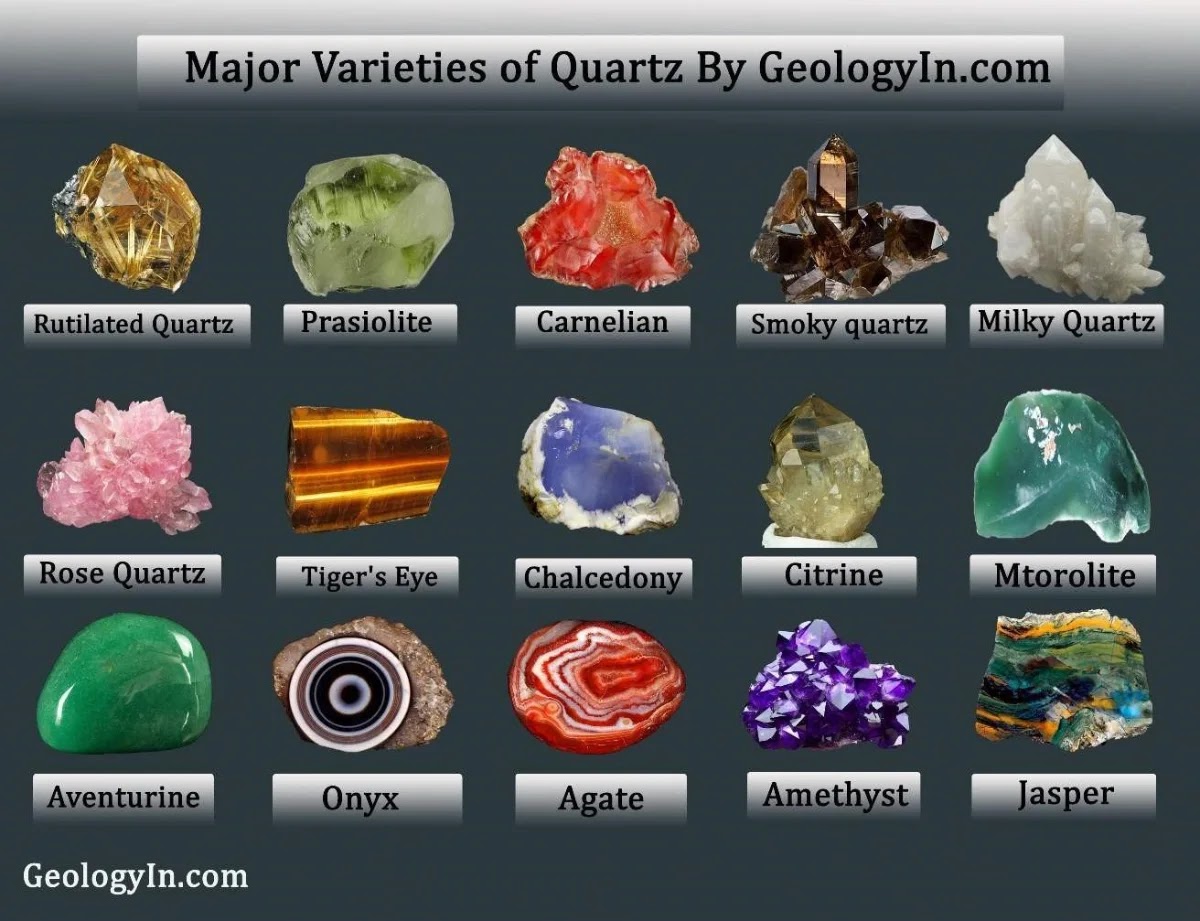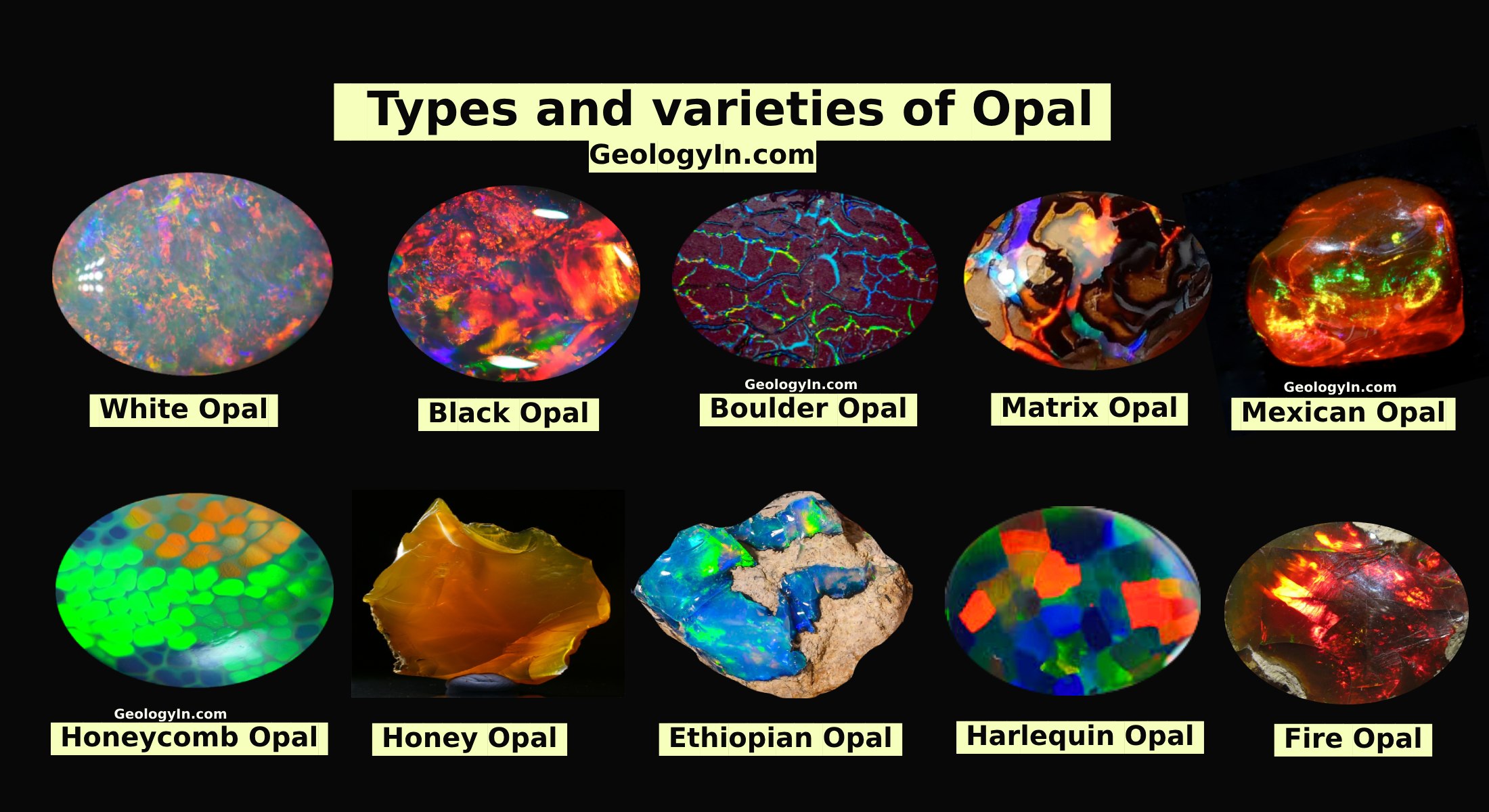Minerals: Types, Properties, and Examples (With Photos)
What Are Minerals?
Minerals are naturally occurring inorganic substances with a specific chemical composition and a crystalline structure. They are the building blocks of rocks and are found in the Earth's crust. Minerals can be composed of one or more chemical elements arranged in an orderly manner.
There are thousands of known minerals, each with its own unique properties. These properties include color, hardness, luster, cleavage, and specific gravity, among others. Minerals are classified based on their chemical composition, crystal structure, and physical properties. Read The Complete Classification of Minerals)
What Makes a Mineral a Mineral?
In order for something to be a mineral, it must first meet four criteria:
First, all minerals are solid. So, while water may contain minerals, water itself can't be a mineral because it's liquid.
Minerals are all naturally formed. This means they can't be manufactured in a lab. Synthetic gems, like cubic zirconia, are therefore not minerals.
All minerals have a unique and specific chemical composition. This is like the DNA of the mineral - it's what makes the mineral different from other minerals.
Lastly, all minerals have a crystalline structure. Minerals are some of the most beautiful substances on Earth, because they are always arranged in an orderly geometric pattern. Minerals of the same type always have the same geometric arrangement of their atoms.
Properties of Minerals
Minerals can be identified using a number of properties. These include physical and chemical properties such as hardness, density, cleavage and color, crystallography, electrical conductivity, magnetism, radioactivity and fluorescence. Some of the important properties are listed below:
The seven physical properties of minerals are:
- Crystal form
- Hardness (The Mohs scale of mineral Hardness)
- Fracture or cleavage
- Luster
- Color
- Streak
- Density
Color: Color is one of the most noticeable properties of a mineral, but it is also one of the least diagnostic. The same mineral can come in a variety of colors, depending on the impurities it contains. For example, quartz can be colorless, white, pink, gray, or even black.
Crystal form is the outward expression of the orderly arrangement of atoms inside the mineral. What you are seeing is the actual arrangement and structure of the atoms in that mineral. For example, look at some everyday table salt, which is a combination of sodium and chlorine. Normally, what you see is a salt cube, but if you were to break this cube down into smaller parts, it would simply break into smaller and smaller cubes because that is how the atoms are arranged.
Hardness is how resistant a mineral is to scratching, not how easily it breaks. Hardness depends on the bonds within the mineral, so the stronger the bonds, the harder the mineral. Mineral hardness is measured on the Mohs scale of hardness, which compares the hardness of different minerals.
Diamond is considered the hardest mineral, so it's a 10 on the Mohs scale of hardness. Talc has a very weak bond between its atoms, and so it's a 1 on the Mohs scale of hardness. If it helps, you can think of the hardness of talc in relation to the hardness of your fingernail, which is about a 2.5.
Streak: Streak is the color of a mineral in powdered form. It is obtained by rubbing the mineral across a streak plate, a piece of unglazed porcelain. Streak is a more diagnostic property than color because it is less affected by impurities.
Fracture and cleavage describe how a mineral breaks. Some minerals break very nicely along smooth planes, and this is called cleavage. Minerals that break this way do so because their atoms are arranged so that they break apart from each other along these planes. Mica is an example of a mineral that has cleavage. If a mineral fractures, it breaks in uneven ways that are not flat or parallel. Again, these minerals break like this because that's how their atoms are arranged.
Luster: Luster is the way light interacts with the surface of a mineral. It is described using terms such as metallic, nonmetallic, glassy, greasy, pearly, and silky. Metallic luster refers to the shiny, reflective surface of a metal. Nonmetallic luster can be glassy (like quartz), greasy (like sulfur), pearly (like talc), or silky (like asbestos).
Density: Density is a measure of how much mass a mineral has per unit volume. It is expressed in grams per cubic centimeter (g/cm3). Density is a useful property for identification because it can be measured relatively easily using a balance and a graduated cylinder.
Tenacity: Tenacity is a measure of how a mineral breaks or deforms. For example, some minerals are brittle and will shatter when struck, while others are malleable and can be hammered into thin sheets.
Magnetism: Some minerals are magnetic, while others are not. Magnetic minerals are attracted to a magnet.
Radioactivity: A few minerals are radioactive, meaning that they emit radiation. Radioactivity can be detected using a Geiger counter.
Fluorescence: Some minerals fluoresce, meaning that they emit light of a different color when exposed to ultraviolet radiation. Fluorescence can be observed using a shortwave ultraviolet lamp.









%20(1).webp)